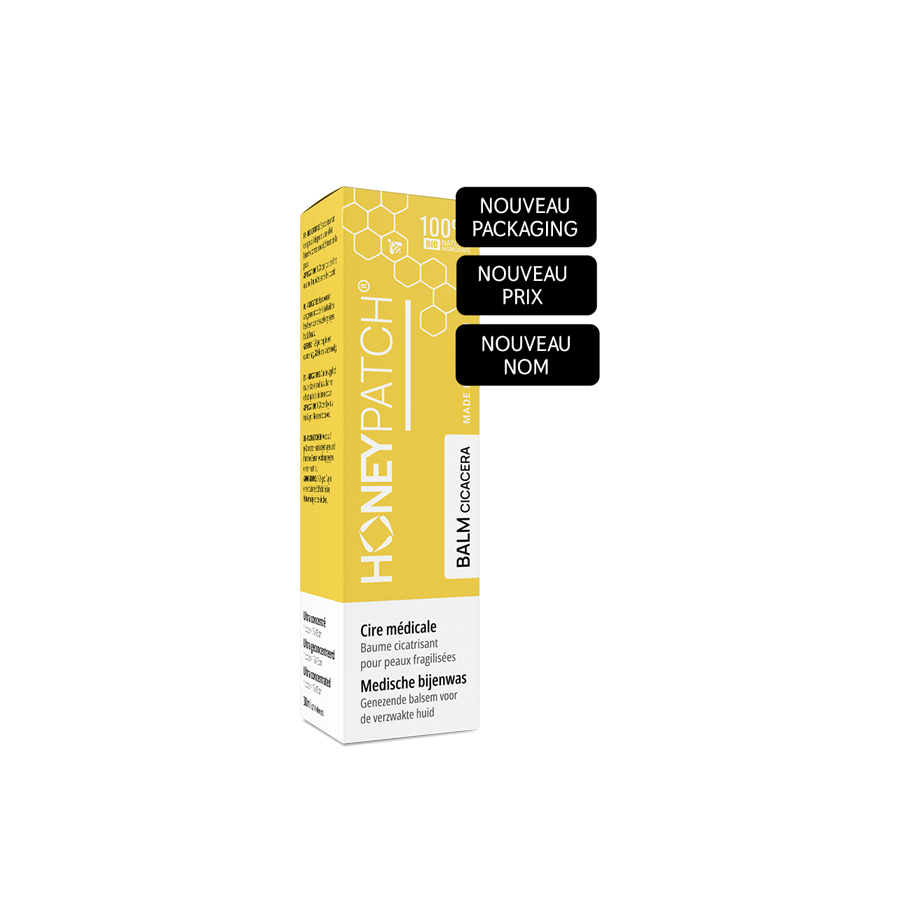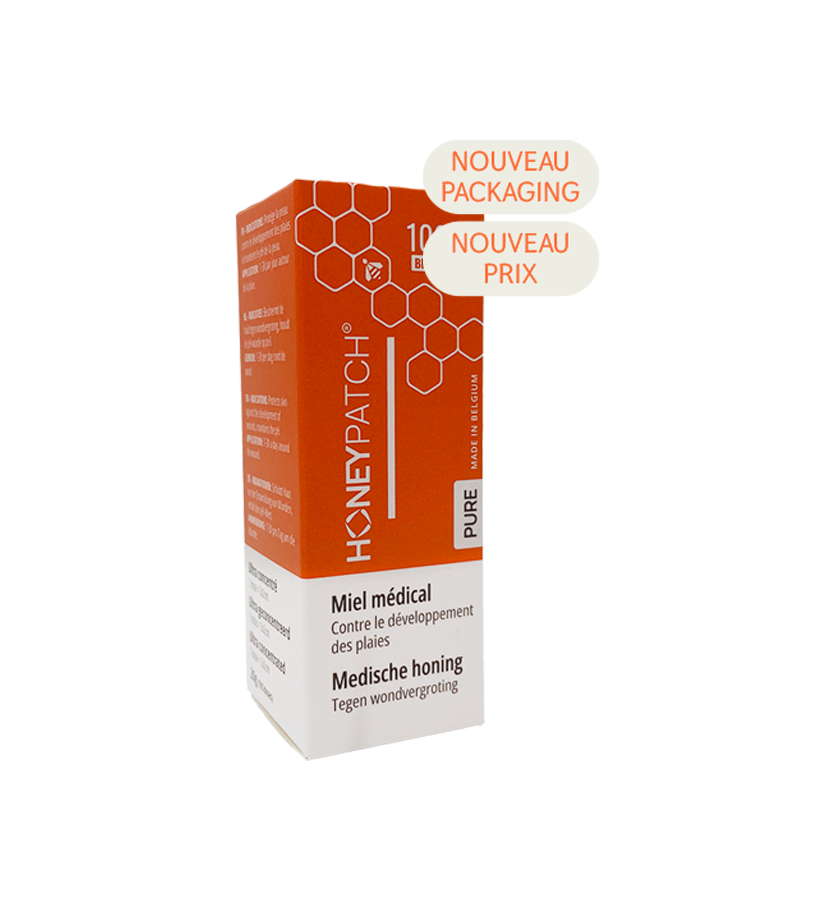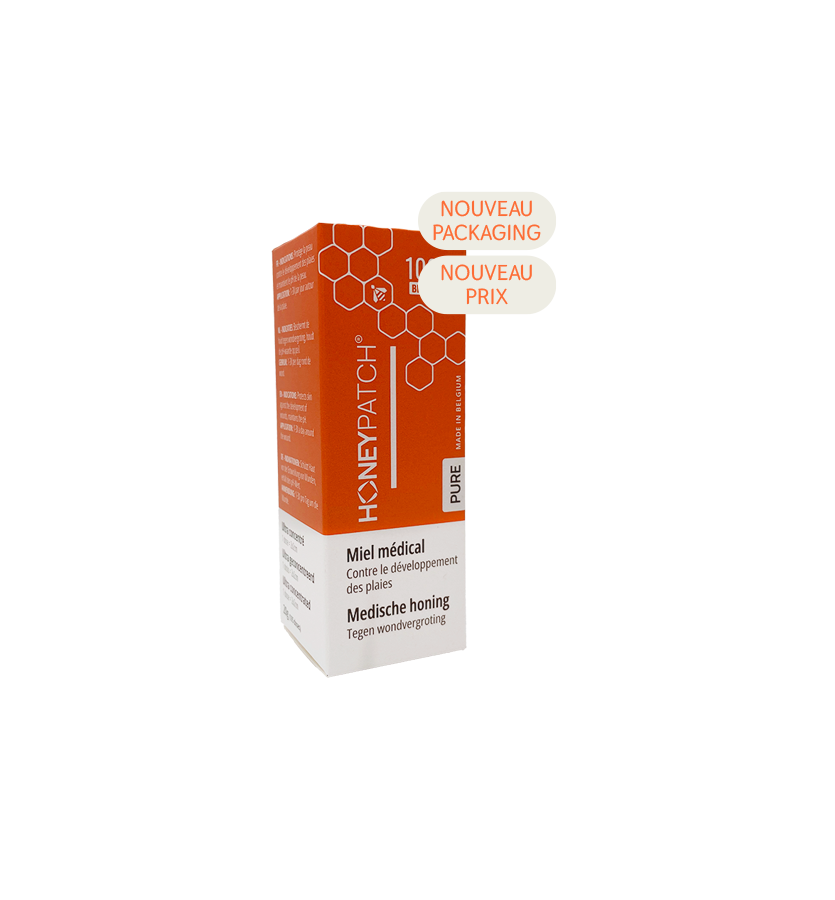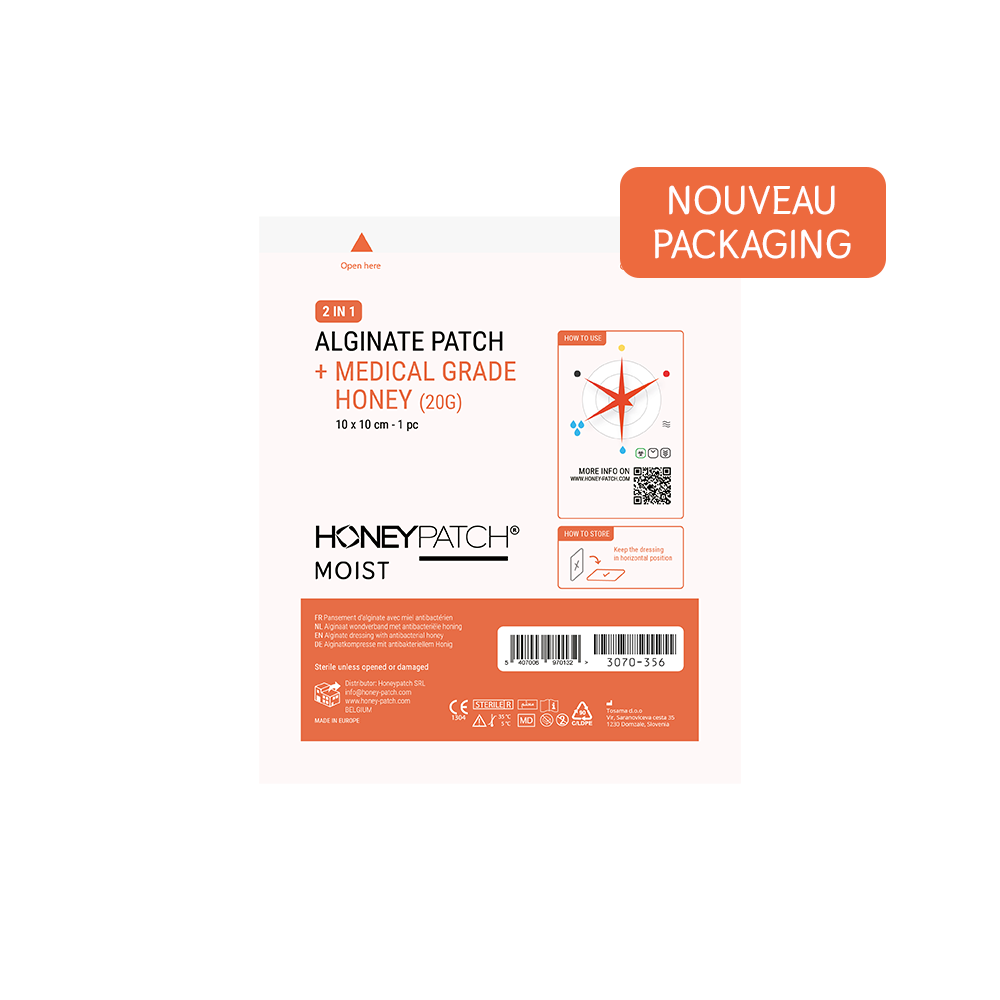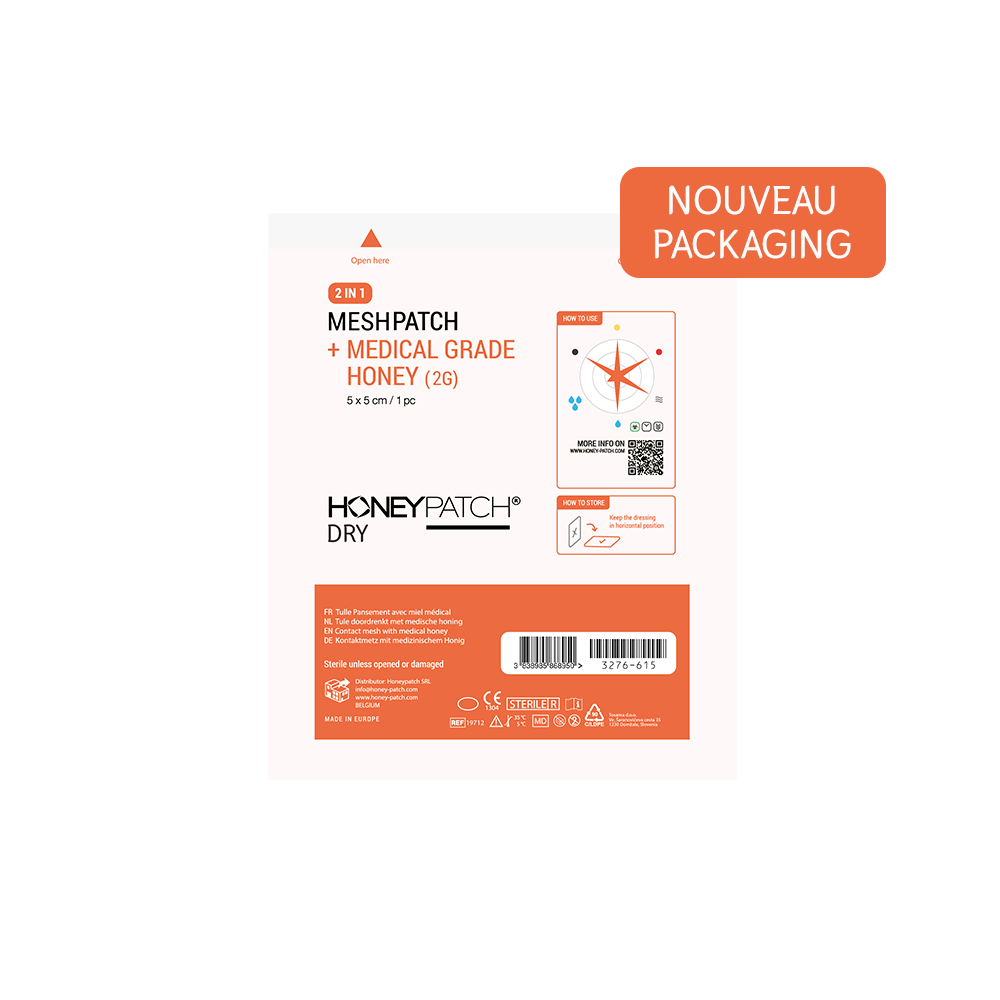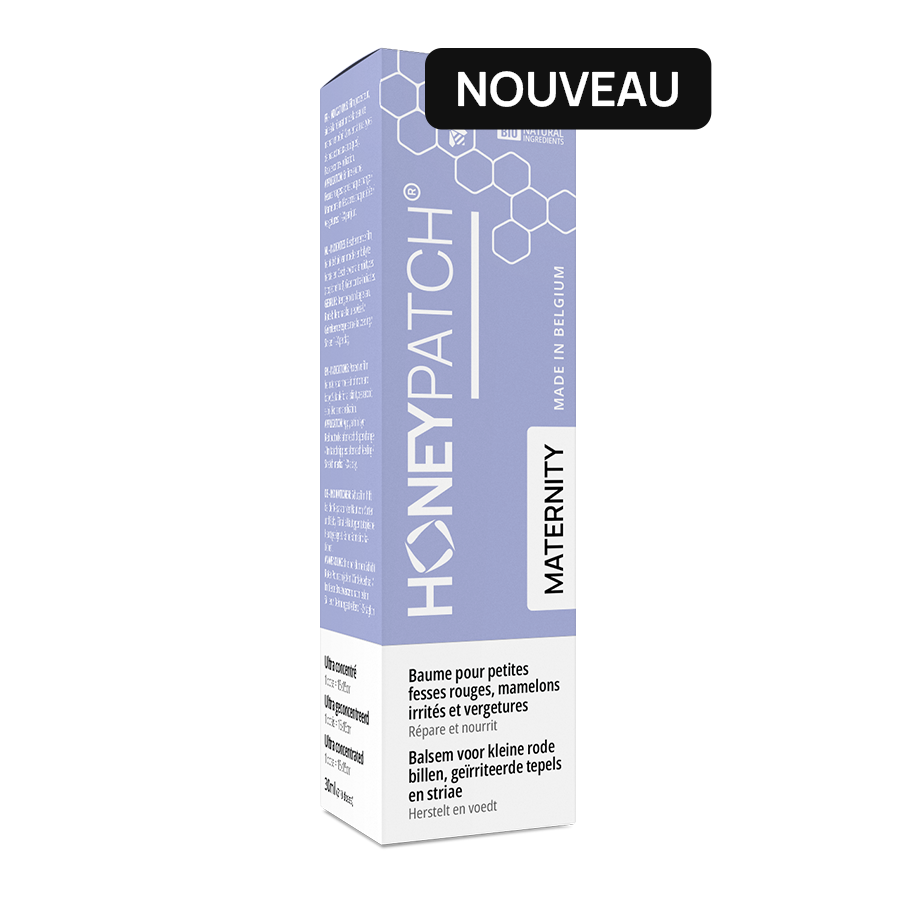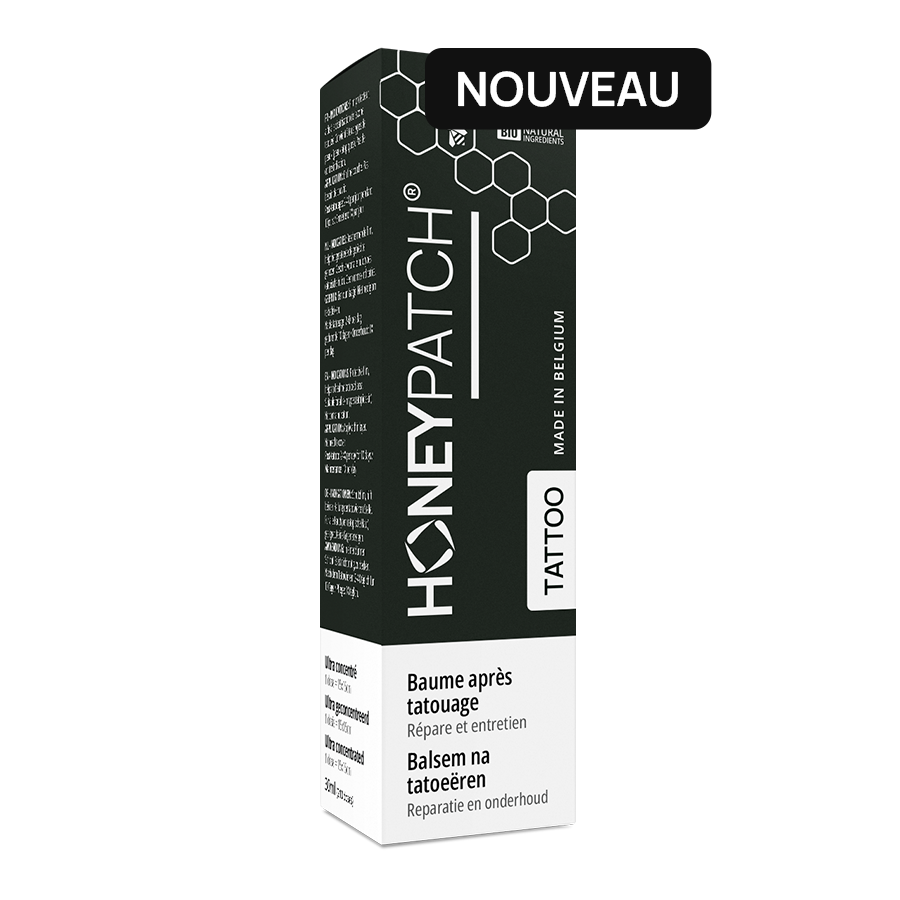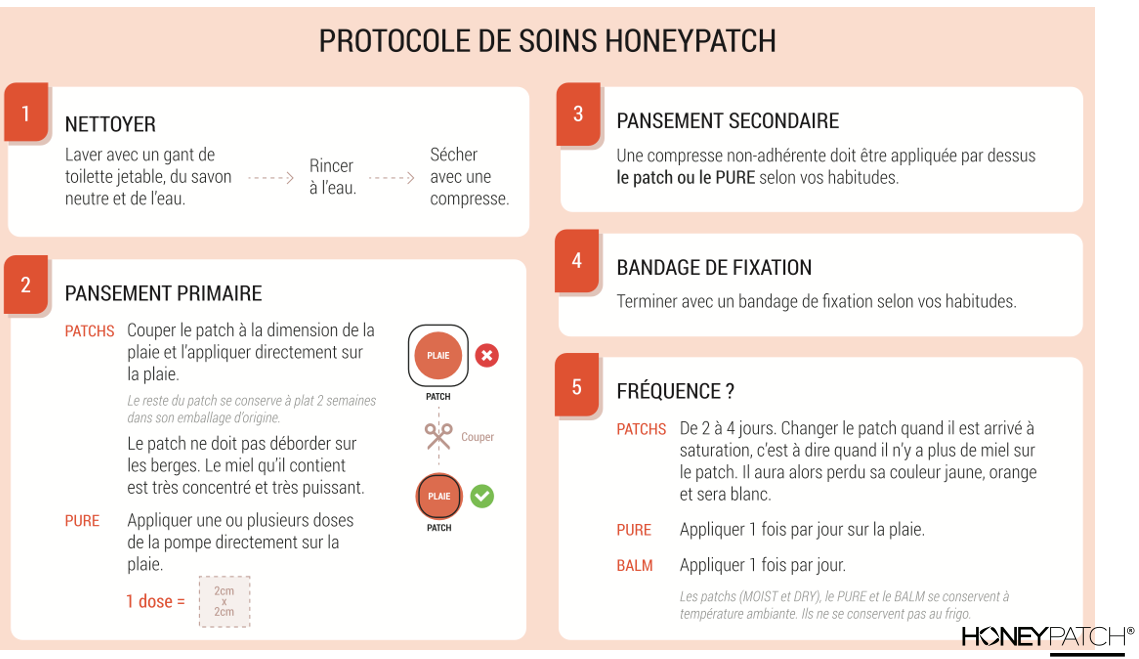
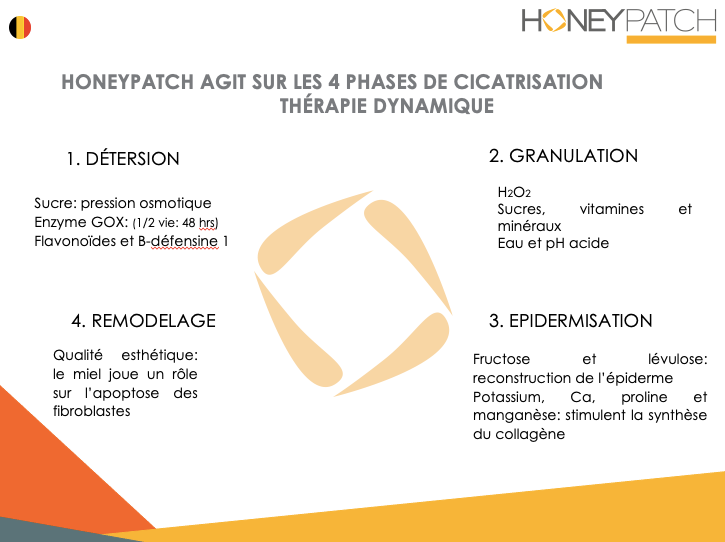
Can you heal a wound from start to finish with Honeypatch?
Indeed, wound healing can be divided into 4 major stages: debridement, granulation, epidermization and remodeling. Thanks to the composition of the honey present in its 2 universal dressings, DRY and MOIST, Honeypatch can treat a wound from “A to Z”.
How does Honeypatch work during these 4 stages of healing?
The debridement stage consists of removing the necrotic tissues as well as the fibrin present in order to allow the wound to progress favorably towards healing. The sugar and the presence of an enzyme "glucoxidase" in the honey present in Honeypatch patches leads to the formation of hydrogen peroxide. This will promote disinfection of the wound and help with the granulation stage of the wound, while avoiding the toxic effects of hydroxyl radicals at too high a concentration. The flavonoids present in honey have anti-inflammatory, antioxidant and antibacterial action. Beta-defensin 1 from honey is a protein which has a very broad spectrum antimicrobial action including bacteria, fungi and viruses.
The granulation phase also called budding phase, consists of the production of new cells which will subsequently fill the wound. The hydrogen peroxide (H2O2) naturally present in honey will stimulate the multiplication of fibroblasts and the development of scar neovascularization. The water and acidic pH present in the dressings create a favorable environment for the wound to heal. The sugars, minerals and vitamins B and C in honey provide energy to cells during the process.
The third phase, epidermization is the reconstruction of the epidermis. Over time, the epithelial cells around the wound will divide and gradually cover the wound. Minerals from honey such as potassium, calcium and manganese stimulate collagen synthesis during wound closure. They promote the transformation of fibroblasts into myofibroblasts. Proline also promotes collagen synthesis.
The fourth and final phase is the remodeling phase. This helps reduce the volume of the scar, as well as improving its final appearance even after its closure. Honey will also play a role in the apoptosis of fibroblasts.
In conclusion, our patches can treat a wound from “A to Z” thanks to the quality of our medical honey.
Below you will find videos explaining the DRY and MOIST patch care protocol.

